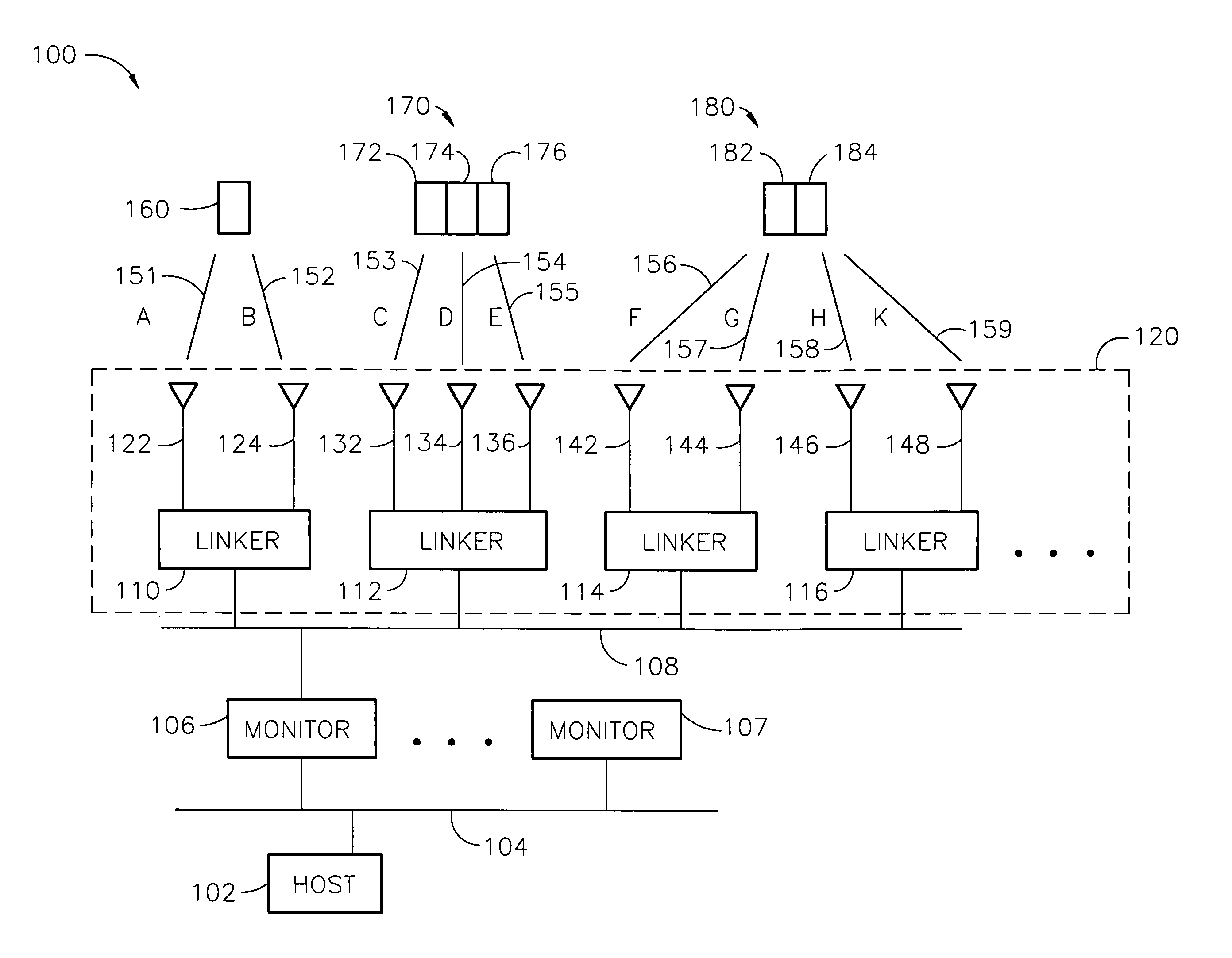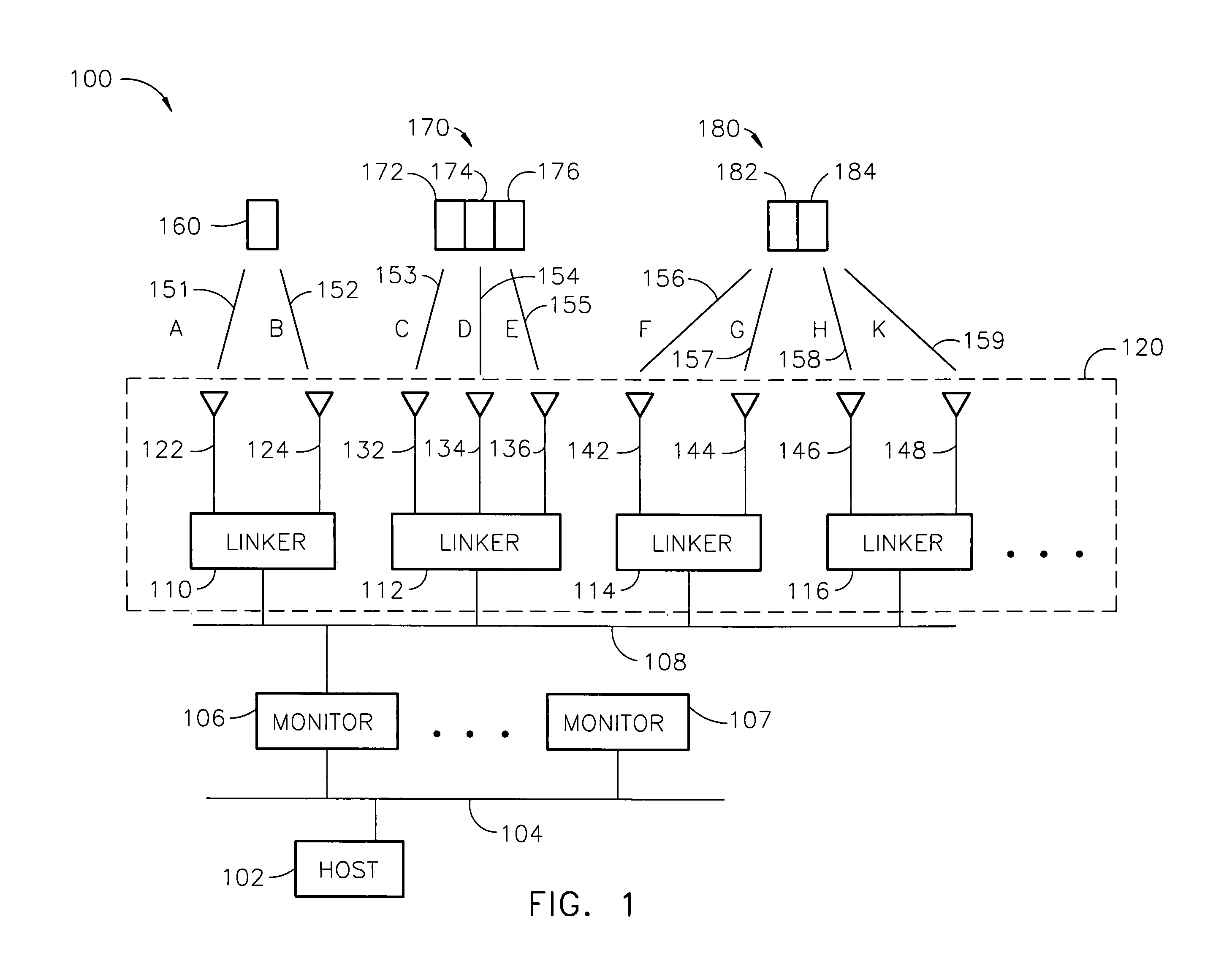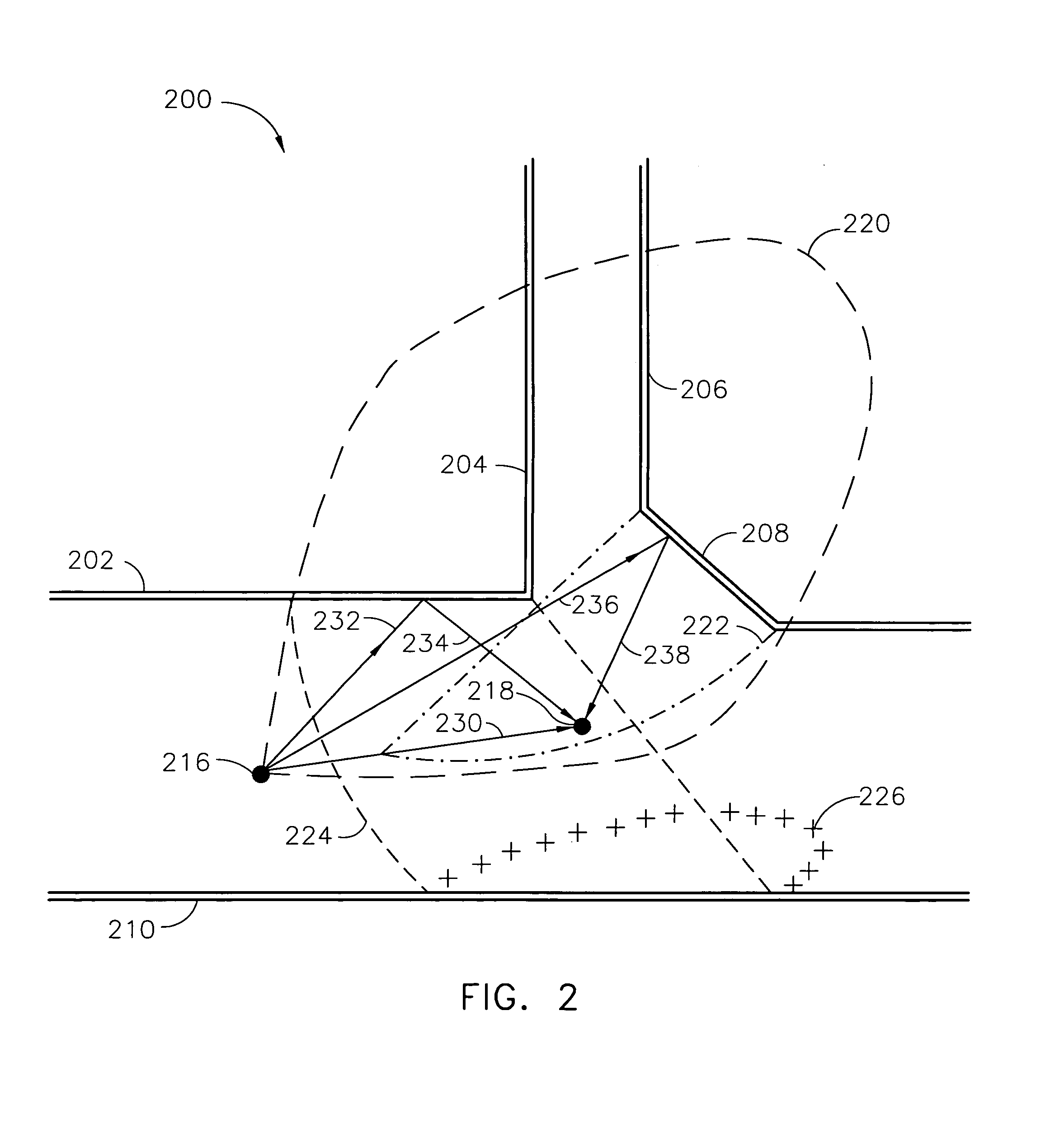Identification device detection using multiple signal combination
a detection device and signal combination technology, applied in the field of object identification systems, can solve the problems of less expensive identification devices being used, and achieve the effects of accurate and reliable detection of identification devices, reduced detection cost, and high detection probability
- Summary
- Abstract
- Description
- Claims
- Application Information
AI Technical Summary
Benefits of technology
Problems solved by technology
Method used
Image
Examples
Embodiment Construction
[0020]An object identification system, according to various aspects of the present invention, provides communication between a monitor and an object, while the monitor and object are within communicating range. Each object, for example, may include a radio frequency identification (RFID) device having an antenna used for communication. Communication, as used herein, may be used to accomplish one or more purposes including: (a) to detect presence of an identification device (e.g., to locate an object as in a zone), (b) to provide operative power to an identification device, (c) to determine an identification device identification, (e) to receive data from an identification device, or (f) to send data to one or more identification devices. Transmitted power levels may vary according to the range suitable for the communication. For example, objects may be detected at a comparatively lower transmitted power level to avoid collisions as discussed above. Communication may be accomplished ...
PUM
 Login to View More
Login to View More Abstract
Description
Claims
Application Information
 Login to View More
Login to View More - R&D
- Intellectual Property
- Life Sciences
- Materials
- Tech Scout
- Unparalleled Data Quality
- Higher Quality Content
- 60% Fewer Hallucinations
Browse by: Latest US Patents, China's latest patents, Technical Efficacy Thesaurus, Application Domain, Technology Topic, Popular Technical Reports.
© 2025 PatSnap. All rights reserved.Legal|Privacy policy|Modern Slavery Act Transparency Statement|Sitemap|About US| Contact US: help@patsnap.com



